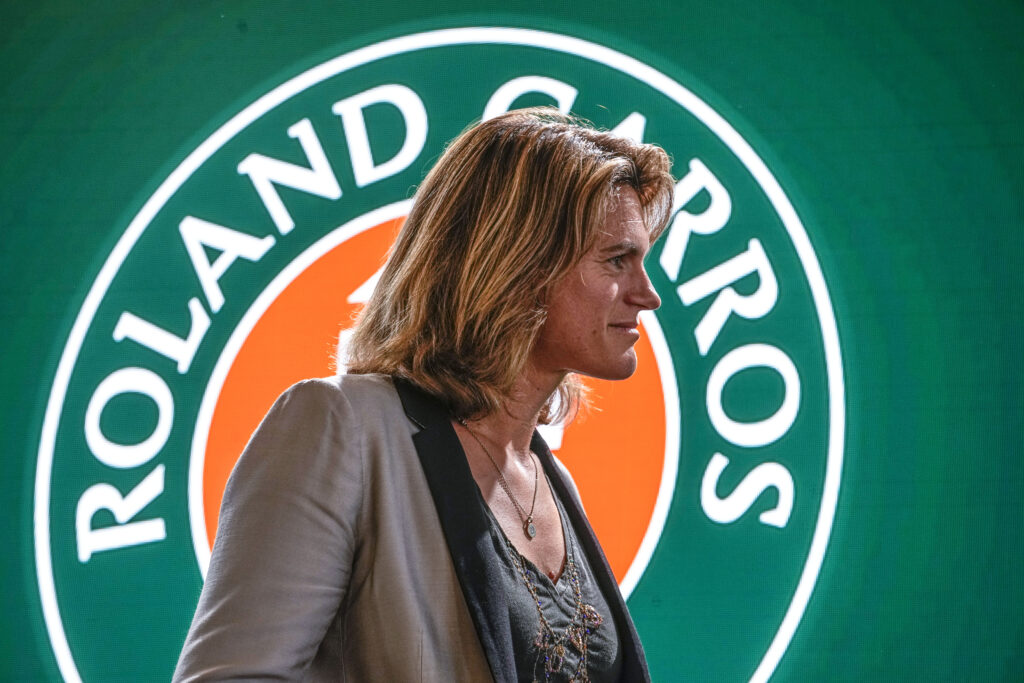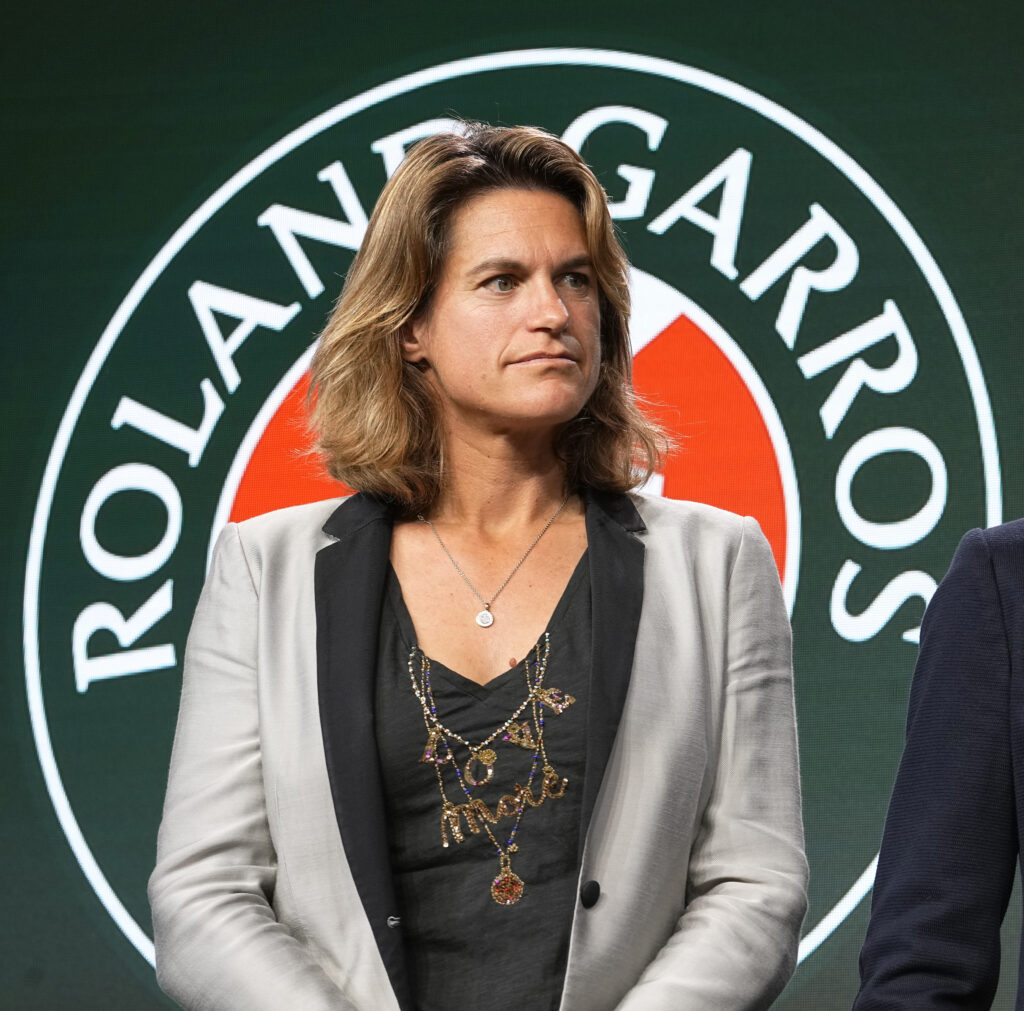Speaking at the traditional second-week news conference to recap the clay-court Grand Slam tournament, Amelie Mauresmo said she tried on a daily basis to find a women’s pairing that had the star power or a matchup worthy of being highlighted in the separate session. Asked about that decision-making process, Mauresmo said in French that having just one match in each night session made it “more difficult to have” that be only a women’s match. As reported by the AP:
Amelie Mauresmo’s last major tournament was the 2009 U.S. Open, after retiring as a player, she moved into coaching and worked with Andy Murray, Lucas Pouille and Marion Bartoli
PARIS (AP) — Amelie Mauresmo, a former No. 1 player who is in her first year as the French Open‘s first female tournament director, said Wednesday that nine of the 10-night sessions at Roland Garros involved men’s matches because women’s tennis currently has less “appeal.”

Speaking at the traditional second-week news conference to recap the clay-court Grand Slam tournament, Mauresmo said she tried on a daily basis to find a women’s pairing that had the star power or a matchup worthy of being highlighted in the separate session that began at 8:45 p.m. local time in Court Philippe Chatrier.
“I admit it was tough,” said Mauresmo, a 42-year-old from France who first topped the WTA rankings in 2004 and returned to that spot after winning the Australian Open and Wimbledon in 2006.
Her last major tournament was the 2009 U.S. Open. After retiring as a player, Mauresmo moved into coaching and worked with Andy Murray, Lucas Pouille and Marion Bartoli, among others, and was France’s captain for the team competition now called the Billie Jean King Cup.
This year’s French Open began on May 22 and will end on Sunday. The last of the 10-night sessions was scheduled for Wednesday, and the only women’s match that got the prime-time treatment — part of a deal with a streaming service — was France’s Alizé Cornet’s victory over Jelena Ostapenko in the second round.
Asked about that decision-making process, Mauresmo said in French that having just one match in each night session made it “more difficult to have” that be only a women’s match. Night sessions at the U.S. Open, for example, usually include one women’s match and one men’s match.
“In this era that we are in right now, I don’t feel — and as a woman, former women’s player, I don’t feel bad or unfair saying that, right now — you have more … appeal,” Mauresmo said. “That’s the general (reasons) for the men’s matches.”
She added: “My goal was, when I was doing the schedule every day, to try and see, from the first round, when the draw came out … ‘what match in the woman’s draw can I put there?’ honestly.”

Her session with reporters was held the morning after 13-time French Open champion Rafael Nadal’s 6-2, 4-6, 6-2, 7-6 (4) quarterfinal victory over defending champion Novak Djokovic in Tuesday’s night session. The match lasted 4 hours, 12 minutes and finished after 1 a.m. on Wednesday, leaving some of the 15,000 or so spectators unable to use public transportation to get home.
“That’s actually a key issue that needs to be settled, and that will be one of our priorities in the future,” Mauresmo said. “We haven’t planned anything yet, but obviously we need to organize ourselves differently with the Department of Transport of Paris with bus systems, with the underground system. If we continue with these night sessions in this direction, people need to leave the stadium late enough and make sure that they have a way to come back home, as they should.”
Nadal, through the media, and his manager, Carlos Costa, directly with Mauresmo, made clear the owner of 21 Grand Slam titles preferred not to play at night, because of the way the cooler temperatures affect his shots. It dropped below 60 degrees Fahrenheit (15 Celsius) during his quarterfinal.
Asked about that, Mauresmo deflected the question and replied: “Rafa has shown us how big a champion he is, far and beyond all these considerations.”
By HOWARD FENDRICH Tennis Writer






